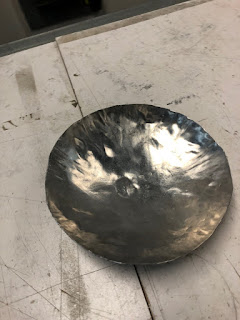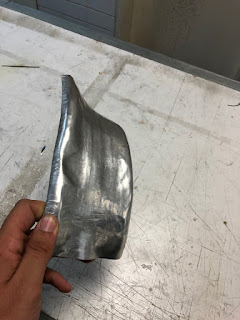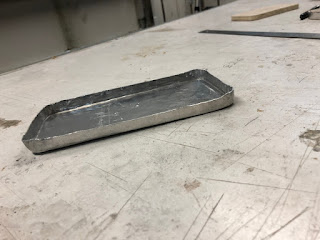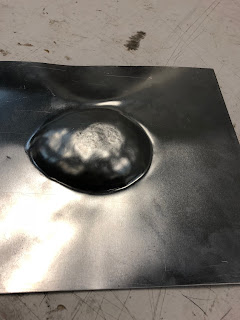The Bowl

The Bowl: In order to form the bowl as best I could, I used a method with various steps to ensure I achieve consistency in the finish of the bowl and also symmetry in the shape of the bowl. In addition to this, this module illustrated the uses of stretching metal and made me think of the various applications this could be used for in the formation of other pieces of metal. Initially, I had marked out where I was going to cut the metal using a sharpie. Following this, I used a pair of left curving tin snips to cut out the shape. Consequently, through the use of tin snips to cut the edges, it was to no surprise that I had sharp edges on the perimeter of my bowl. To mitigate this I used a metal file to smooth the edges as best I could,for two reasons, 1. for functionality and 2. for ease of formation while I was working with it and to avoid injury. Upon completion of filing the edges, I began to strike the piece with an array of different rubber mallets in order to take the shape ...


